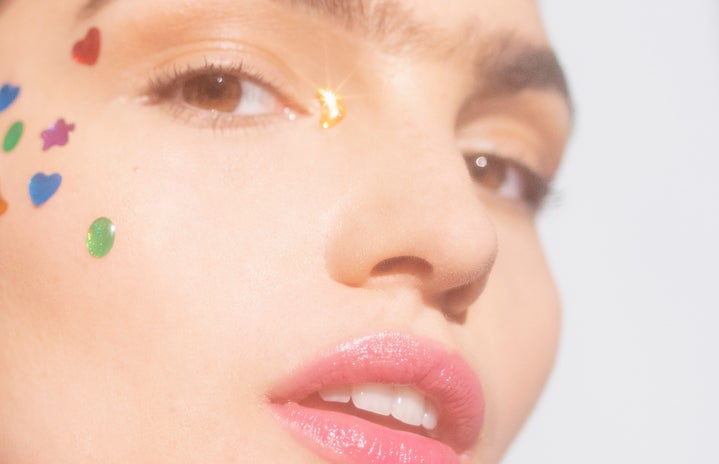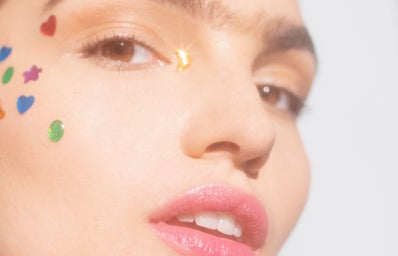For many, the phrase “DIY beauty” evokes a series of cliches: cringey, gimmicky “life hack” video tutorials and fuzzy Pinterest screenshots, claiming the antidote to all your beauty woes lies in the depths of your kitchen shelf — more likely than not, something to do with coconut oil or apple cider vinegar. And you can’t seem to find any compelling evidence that these remedies work, aside from the same 3 before-and-after pictures that may or may not be photoshopped. No wonder why the most ardent of skincare nerds may be hesitant to explore DIY beauty.
Certainly, there are heaps of pseudoscience and foolish ideas floating around on the Internet under the description of “DIY beauty.” Nonetheless, Do(ing) It Yourself can also be productive and highly efficient, if you do it right. You’d be surprised to learn that there’s quite a few things you could make from scratch — and not screw up terribly.
My own foray into DIY beauty began in the height of the COVID-19 pandemic. I was browsing on Reddit, and I stumbled upon r/DIYbeauty, where users exchanged unexpectedly well-researched and thoughtful DIY recipes, for mostly skincare and some makeup. On r/DIYbeauty, I became versed on key ingredients, their function, and where I could get them. Shortly after, I purchased my first batch of ingredients and started experimenting. I thought I’d come here now to share all the awesome hacks that I’ve learned!
Some disclaimers…
Making your own beauty products means that you’ll be handling undiluted, raw materials. As with anything, DO YOUR RESEARCH. If you look for an ingredient on a reputable retailer, you should find an SDS sheet, which contains important safety precautions regarding flammability, toxicity, and recommended amount.
Also, it should be noted that skincare products are made with a delicate cocktail of ingredients to ensure effective absorption and shelf life. Personally, I would never make my own serum or toner, and some things, like SPF and acid peels, should be left up to a cosmetic chemist — no ifs ands or buts.
Speaking of, I’m clearly not a cosmetic chemist and the methods below have not been tested in a lab. I’m very happy with what I’ve created (or else I wouldn’t be telling you all), but everyone’s skin reacts differently. All that is to say — do it at your own risk. Cool? Cool. Now, to the fun part…
For textured skin: one-step oil cleanser
The oil cleansing method (or OCM, in short) is a gentle, yet highly effective method for removing dirt and makeup from your skin. Years ago, I picked up an oil cleanser on a whim at Trader Joes, and was blown away by how smooth it made my rough, bumpy skin. I quickly went through 2 bottles, but I hesitated to get another one because it was pretty pricey. Articles on the Internet told me that I could use just any oil, so I did, but everytime I massaged my face with straight oil, I was left with a stubborn residue that I had to wash with regular soap to remove. My skin just didn’t feel the same.
Apparently, what sets store-bought oil cleansers apart from any other oil is the presence of emulsifying agents, which are chemicals that allow oil and water molecules to bind, rather than separate. That emulsification is responsible for clean rinse and the fresh afterfeel of store-bought oil cleansers.
My research suggested that all I needed was a tiny amount (up to 20% concentration) of an emulsifying agent to transform any oil into a rinse-off formula; I chose an emulsifier called polysorbate-80, since it was the most economic and relatively safe option. I’ve found that mixing it with avocado oil with a 1:9 ratio gives me a deep, but gentle, cleanse. I now have a huge bottle of oil cleanser that I generously massage my face with, twice a day, and it’s been a game-changer. I’ve never been so excited to wash my face!
For a smooth, even canvas: custom-made color corrector
I have discoloration around my mouth, which resembles a mustache and peeks through most concealers. To tell you the truth, it’s my biggest insecurity. Through trial and error, I’ve found that the best way to achieve coverage is to apply liquid foundation on my entire face, dab an apricot concealer, then lightly set with a powder foundation.
There aren’t as many apricot concealers as there are yellow concealers, and I could never find one that I was completely satisfied with, so I decided to go the DIY route, once again. I bought orange pigment and mixed it with a yellow concealer, until I got a perfect apricot shade. It looked amazing, and it’s become a fixture in my makeup routine. Texture and coverage is crucial when it comes to base makeup, and the ability to customize shades creates so many options.
If you are saving $$$ or boycotting brands: hidden dupes
I suppose this isn’t technically DIY, because you won’t be making anything from scratch, but it’s worth noting that cosmetic ingredient wholesalers are a goldmine for dupes.
Makeup ingredient suppliers, like TKB Trading and Mad Micas, carry a wide array of loose pigments and glitters that can be applied directly as eyeshadow or highlighter. Lotioncrafter, a skincare ingredient supplier, sells niacinamide powder and l-ascorbic acid powder, which appears to be identical to the ones sold by The Ordinary. Furthermore, many of these wholesale retailers carry natural products, such as rosehip oil and shea butter, for a low price, without irritating fragrances or unnecessary packaging.
A big part of #Adulting is using money prudently, and it’s entirely possible to have a splendid beauty regime on a budget. Hopefully, my DIY adventures can give you an idea or two that may have not crossed your mind before.


